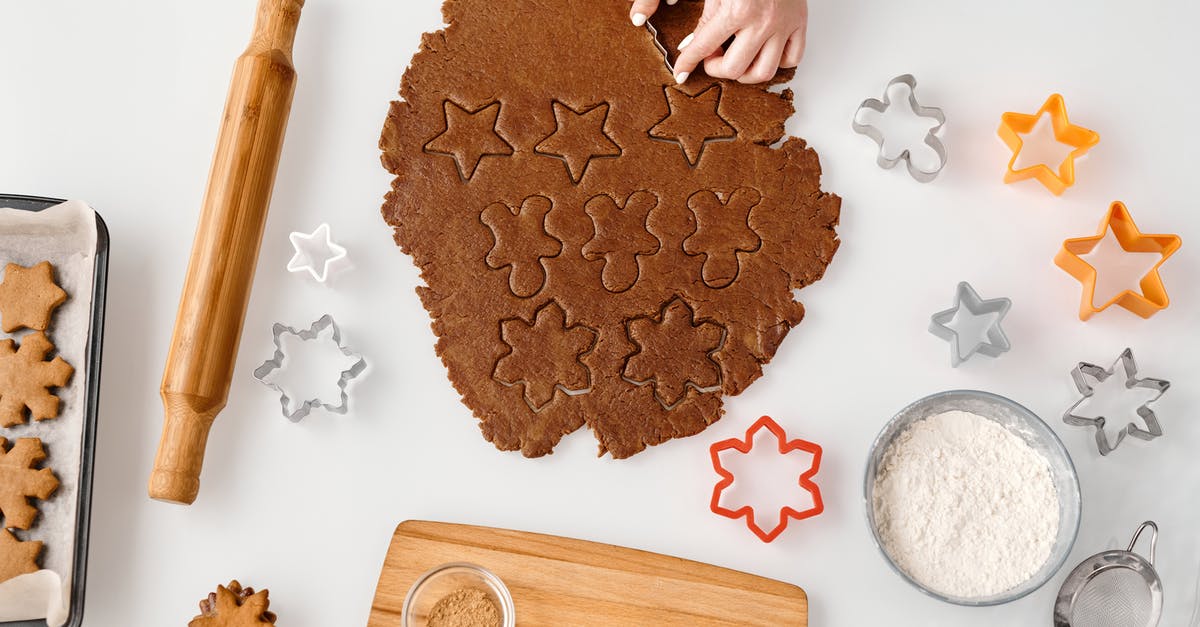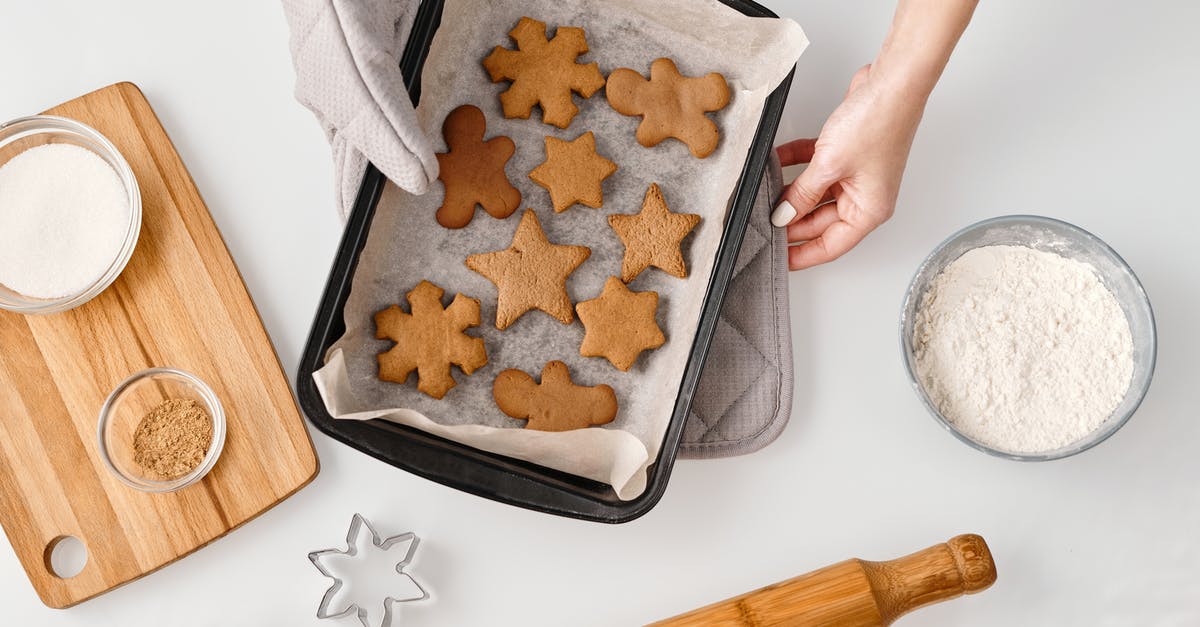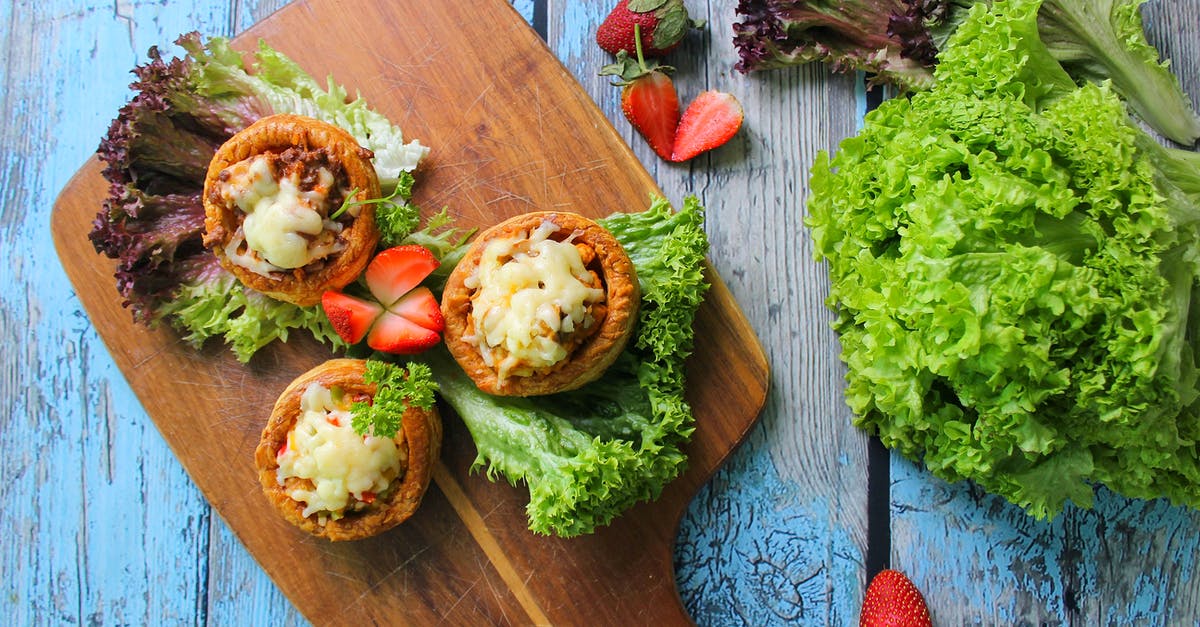Rule of thumb for cooking or baking different quantities?

I often want to cook double quantities from that stated in a recipe - say, twice the quantity of pasta bake or casserole (all in one dish), or two cakes instead of one (in separate tins).
Is there a rule of thumb for extending the cooking time from that stated in the recipe, and should I adjust the oven temperature up or down as well?
Best Answer
The answers that exist are incomplete, somewhat misleading, or too specific.
The amount of time that you will need to bake items depends mostly on the following factors:
Major factors
- The shape of the item, especially its thinnest dimension (usually height for a cake or casserole)
- The temperature of the oven
Minor factors
- The air circulation pattern within the oven
- Other items in the oven (due to changes in air circulation, and creating infrared shadows)
Except for cookies which are much more sensitive to local temperature variation within the oven since they are so thin and cook so quickly, the minor factors are very minor indeed.
What happens when you increase food volume?
If you double the volume of an item, you might be changing its dimensions.
If you double a cake recipe, and use two cake pans instead of the one, the dimensions of each pan are going to be the same. The total bake time will be very close to the same as baking one cake.
Now, take a typical brownie recipe designed for an eight inch (20 cm) square brownie pan. If you double it, but bake in a 9 x 13 pan, or quadruple it and bake in an 11 x 17 half sheet, the total area of the pans increase approximately proportionately to the total volume of batter. So the thickness of the batter will remain close to the same. Again, the bake time will not change significantly.
However, if you double the amount of a lasagna recipe, but only use as lightly larger casserole, the 2nd lasagna will be much thicker. It will require more time to bake through. If it will over crisp on top during that time, you might even need to decrease the temperature to compensate, and lengthen the baking time. Or perhaps cover it with foil for part of the cooking, so that it doesn't crisp up and brown early in the baking. There is no set rule.
As you can see, the trick in increasing quantities of a recipe like a cake or casserole is to keep the thickness of the product close to the same, so that you can bake at the same temperature, for close to the same amount of time.
Caveats, exceptions, and stuff
When you add more items or volume of food to the oven, several things happen. The most important of these is that you have more mass of food to heat. Every oven has a total amount of heat it can produce per minute or hour. If there is enough food in the oven that it cannot keep the temperature up because the foods are absorbing the heat faster than it can be produced, you will have a problem. However, this is almost never a factor in practice, because ovens can produce a lot of heat over time. They normally operate in on/off cycles to prevent raising the temperature higher than desired.
Secondly, if there is more than one pan or tray in the oven, they cast shadows on one another, preventing the radiant heat (infrared) from the oven walls, floor, ceiling, and so on from equally reaching all portions of the food equally. The air circulation patterns in the oven also change, creating hotter and cooler spots. This is why when baking two sheets of cookies in the oven at the same time, you want to swap the top and bottom trays, and rotate them from front to back.
Every food item you bake is going to have some natural variation. Because of these variations, you cannot bake to an exact time in any case. You must have a test or indicator to know when the food is done, such as it hitting 200 F internally for a bread (different breads need different internal temperatures), or a casserole being browned and crusty on top, or a cake pulling away from the sides of the pan.
The timing will help you know when to check, and to plan your cooking logistics, but you will still need to test for doneness.
If you have followed the guideline of maintaining the thickness of the food as you adjust the quantity, the doneness test will still tell you when you are finished, and the total time required will be very close to the original single recipe time. The additional baking time will be within the noise, and not something to worry about.
When it matters
Savory casseroles like lasagna, baked ziti, potatoes Anna, gratins, US-style "stuffing", macaroni and cheese, and so on are very tolerant of a wide range of temperatures and times, within reason (lower temperature, longer time, higher temperature, shorter time.) You generally just need to heat them through, and crisp or brown the top. You can inhibit over browning by covering the casserole for part of the baking period.
For this reason, when scaling these recipes, even if the thickness changes a bit, you can change the temperature (down slightly, perhaps 25 F) or time, and watch until it is done. However, it is difficult to give a set rule. Experience will guide you.
For cakes and other baked goods, the interaction of time and temperature with the chemistry of the recipe (such as gelatizing starches, setting protein networks, triggering chemical leavening, setting crust before collapse) and so on is much more important. It is far trickier to adjust time or temperature successfully. In these cases, you want to maintain thickness by using more than one pan, or increasing the area of the item in proportion to its volume.
Pictures about "Rule of thumb for cooking or baking different quantities?"



Quick Answer about "Rule of thumb for cooking or baking different quantities?"
There is no set rule. As you can see, the trick in increasing quantities of a recipe like a cake or casserole is to keep the thickness of the product close to the same, so that you can bake at the same temperature, for close to the same amount of time.What are the rules of thumb in baking?
A: The general rule of thumb for converting a recipe from a conventional oven to a convection oven is to either use the same temperature and bake for 75% of the stated time (i.e. if a recipe says to bake for 20 minutes, bake for only 15 if using a convection oven), or you can reduce the oven temperature by 25 degrees F ...What is the golden rule in baking?
That means reading the recipe right through before you start, and getting everything ready in preparation. You may need to line a baking tin, or measure and weigh the ingredients \u2013 none of which you want to do while in the middle of separating eggs or with flour up to your elbows.Does it take longer to bake multiple items?
The size and the amount of "work" the oven needs to do is the exact same on each item individually ". It's true that the oven has to deliver the same amount of energy to each item. So in total it has to deliver twice as much. It only has a finite amount of power available and so it takes longer.Do you double the cooking time when you double a recipe?
Cook Time.Rarely will the cook times be twice that of the original recipe. Check for doneness at the time called for in the original recipe and then check every 5 minutes until the recipe is completely cooked.Rule of thumb for cooking or baking different quantities?
More answers regarding rule of thumb for cooking or baking different quantities?
Answer 2
For Baking, to double the quantities, try the following:
- Remove 1/3 of the cooking time.
- Double the remaining amount.
- Add your original third back on.
So If you're doubling something that would take 1 hour to bake.
- Remove 1/3 (Leaving 40 minutes)
- Double this new amount (Giving 80 minutes)
- Add your original 1/3 back on. (100 minutes)
You may need to play around with the temperatures to make sure that you're not burning the outside.
Answer 3
The only advice I can offer is simply:
- If you're cooking double the amount in a double sized tin/dish, decrease the temperature by approximately 15 to 25c and increase the cooking time.
- If you're cooking double the amount in separate tins/dishes/ whatever, (more volume in the oven) increase the temperature by approximately 25c and increase the cooking time.
Sources: Stack Exchange - This article follows the attribution requirements of Stack Exchange and is licensed under CC BY-SA 3.0.
Images: Nicole Michalou, Nicole Michalou, Jess Loiterton, Eva Bronzini
